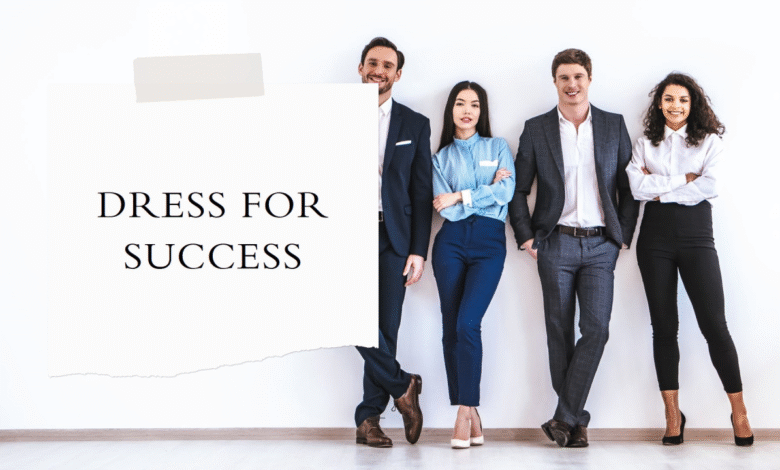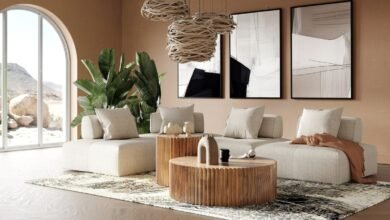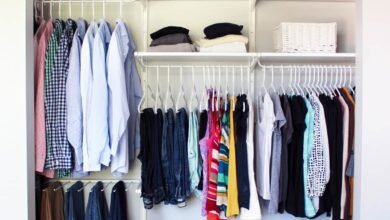The Visual Advantage: How Dressing for Success Shapes Your Career and Confidence

Introduction
Dressing for success isn’t about a closet full of labels it’s about intentionally using clothing as a tool to communicate competence, respect, and self-respect. First impressions form within seconds, and what you wear influences not only how others perceive you but also how you feel and perform. Whether you’re entering interviews, leading meetings, or networking at industry events, clothes that fit, flatter, and align with situational expectations help you project clarity and credibility. This article breaks the concept down into actionable areas: understanding context, choosing fit and fabric, mastering grooming and accessories, and cultivating a personal style that supports long-term career goals. Each section gives practical, research-aligned guidance you can apply immediately from affordable ways to upgrade staples to mental tricks that translate clothing choices into higher confidence. The goal: make dressing for success simple, sustainable, and authentic, so your outward appearance enhances not hides your true professional strengths.
Understanding Context and Dress Codes
Reading the room starts with recognizing the unspoken dress language of your workplace or industry, and adjusting your wardrobe accordingly. Corporate finance, creative startups, academic settings, and client-facing roles each have distinct visual norms; dressing a notch above the average in your environment is often the safest approach for signaling seriousness without appearing out of touch. Assess not only the formal policy (if one exists) but the common behaviors do people wear suits, smart casual, or jeans and blazers? For important events like interviews, presentations, or client dinners, err on the conservative side while allowing small touches of personality. Consider cultural expectations and seasonal practicality too: fabrics, layers, and modesty norms matter across regions and situations. Finally, remember that consistency builds trust reliably polished dressing helps colleagues predict how you’ll perform, and that predictability is a quiet but powerful form of professional currency.
Invest in What Works for You
Fit is the single most transformative element of clothing: even inexpensive garments look professional if they fit correctly. Prioritize tailoring for key pieces blazers, trousers, dresses, and button-down shirts because small adjustments to sleeve length, waist, or hem can drastically elevate your appearance. Fabrics affect comfort and perception: natural fibers like wool, cotton, silk blends, and linen usually breathe better and maintain structure, while synthetics may save cost but wrinkle or shine. For day-to-day wear, choose wrinkle-resistant blends that keep you comfortable under long meetings or travel. Pay attention to color and pattern: neutral palettes build a versatile base, and subtle patterns add interest without distraction. Proper care laundering according to label instructions, occasional steaming, and safe storage extends a garment’s life and preserves its presentability. Investing selectively in fit and fabric yields the best return: you’ll look cleaner, feel more confident, and avoid wardrobe pitfalls.
Grooming and Accessories
Grooming and accessories are silent ambassadors of your professionalism; they refine your overall look and influence micro-impressions. Basic grooming clean, trimmed nails; tidy hair; and well-kept facial hair or a shaved look signals attention to detail. Accessories should serve a purpose: a polished watch, clean shoes, a structured bag, and a simple belt convey organization and readiness. Avoid overly flashy items for conservative settings; instead choose one subtle statement piece if you want to inject personality. Functional choices like supportive shoes for long days, a professional tote that fits documents or a laptop, and breathable layers for changing climates also show practical planning. Fragrance should be minimal or avoided in close professional settings to respect colleagues’ sensitivities. Lastly, keep technology neat (clean phone screen, tidy cables) and maintain fresh, professional stationery when needed; these small, consistent behaviors amplify your credibility more than any single designer label.
Building a Sustainable Professional Wardrobe
A sustainable, professional wardrobe emphasizes a small set of versatile staples that can be mixed and matched for multiple scenarios. Start with foundational pieces a neutral blazer, well-fitted trousers or skirt, crisp shirts, and a dependable dress then layer personality through textures and a few accent pieces. Capsule thinking reduces decision fatigue, helps you prioritize quality over quantity, and can be kinder to your budget and the planet. Rotate seasonal pieces responsibly: repair before replacing, donate items you no longer wear, and invest in quality for frequently worn garments. For those on a tighter budget, focus spending on shoes and outerwear, and use alterations to get a sharp fit. Keep an inventory to avoid duplicate purchases and track what gets regular use; this prevents wasteful shopping and builds a wardrobe that serves career transitions and evolving roles. Over time, a curated collection communicates consistency, reliability, and personal taste all hallmarks of professional maturity.
Conclusion
Dressing for success is less about conforming to a style template and more about deliberate presentation: clarity of fit, respect for context, attention to grooming, and a sustainable approach to wardrobe building. When your clothing choices align with your role and values, they become a tool that amplifies your competence and supports your goals. Small investments in fit and care, combined with thoughtful accessory choices, deliver outsized returns in confidence and professional perception. Remember: the aim is not perfection but consistent, intentional presentation that helps others see your capability and allows you to operate at your best.
FAQs
Q1: What’s the quickest way to look more professional without spending much?
A1: Focus on fit, grooming, and one key accessory. Tailor an existing blazer or shirt, keep hair and nails neat, and wear a clean pair of shoes; these changes instantly sharpen your look.
Q2: How can I adapt a formal outfit for a creative workplace?
A2: Maintain the structure (blazer or tailored piece) but add casual elements like smart sneakers, interesting textures, or a patterned shirt to signal creativity while staying polished.
Q3: How often should I replace work clothes?
A3: Replace items when they no longer fit well or show wear that can’t be repaired. High-use pieces like shirts and shoes may need refreshing every 6–18 months depending on care and frequency.



